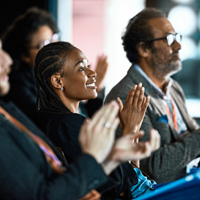You have 30 seconds… GO!
Errrrr...
Tea
Tea tin
Afternoon Tea
English Tea
Tea Bags
NOPE. Time’s up!
The answer is GREEN CUSHION of course!
Regular disappointment
Fun aside, there is a serious point here. We’ve likely all seen the news about how internet search is changing to incorporate generative AI. This is great news for all of us, we can be even more efficient at finding what we need from these tools. But where does this leave retail? The quality of customer experience based around search on many retail sites is actually way below the expectations we all have for it and about to get bigger based on our growing expectations for search in general. Google say that 95% of customers have experienced this disappointment on a retail website in the last 6 months.
There are multiple reasons why search can disappoint us; poor query understanding, poor relevancy and zero hits and the fun examples above fall into the first two. Let’s now look at what's going on in more detail.
Poor query understanding
Searching involves two key steps: the first is to understand the intent of the query terms. Where these are very short ‘head’ queries (1-2 terms) e.g ‘dress’, the lack of specificity implies that the customer is willing to browse the results. Most search engines can do a decent job of finding candidate products in their catalogues in this scenario. The challenge however then changes to one of how results are ranked and displayed, which is covered in the next section.
Query understanding becomes much harder for ‘tail’ queries (3+ terms) and a more natural language-like formation e.g. ‘date night dress in small’. The use of longer queries is a growing trend and hence it becomes vitally important to be able to handle them. This trend is only going to develop further as users see the line between search and chat blurring.
Both head and tail searches implicitly have different levels of user expectation built-in. The more specific we are the more we expect exactly what we’re looking for to be displayed to us. Unfortunately, first generation search technology, even with some AI enhancement, isn't always able to meet this expectation. There are other query understanding problems too we could get into. Inspiration-type queries such as ‘christmas gifts for dad’ require an even deeper understanding of what the user means and how it might map to a product catalogue which does not contain these kinds of terms.
The reality is that the more search terms I enter, or the larger the gap between the language in the product catalogue and the query itself, the harder it becomes to understand user intent without some form of Large Language Model (LLM) to help. This is the basis of the generative AI technology chat you’ve been hearing so much about recently. What you perhaps didn’t know is that this is already available to help retailers today.
Poor relevancy
Relevancy is the second step of the search process. Given a candidate set of possible matching products in the catalogue which ones should be returned? Obviously the less specific the search (head queries) the more difficult it becomes to know how to answer that question. Head queries have all kinds of potential customer experience fails waiting for us. Single terms without context e.g. ‘jacket’ require additional context to be added back in in order to have any hope of being relevant.
Google reports that only 3% of their users navigate beyond the first page of search results. There’s a big message here: we want relevant results that are immediately obvious. This is the absolute essence of this silly Top Results game. If you do not show customers products which match their intent, a sale is likely lost and revenue is left on the table.
Zero hits
Nothing matches our query, which is usually a huge disappointment. However, this can occur for many reasons, depending on multiple factors but mostly due to the query terms we entered. Here are the reasons
1. Mis-spelling
The retailer’s search was not able to detect and deal with any typos. There are some decent attempts at fixing these kinds of problems but they are still remarkably easy to come by.
2. Semantic terms
The search terms used in the query do not match the language used in the product catalogue. E.g. ‘date night dress’ instead of ‘short black dress’.
3. Unique or specific terms
Product codes are common here. If you’re being very specific and the retailer doesn’t have this term in their index or you get some of the formatting incorrect you’re probably not going to find it. Sorry, computer says no.
4. Too many terms
When you enter three or more query terms we refer to these as tail queries. Usually this is done to be very much more specific about the ask e.g. ‘data night dress in small’. it is not uncommon for previous generation search algorithms to be challenged by this scenario and instead of applying intelligence to understand the intent, they process all terms the same way causing a no results found scenario.
Here’s the thing: in all of these cases, from a customer perspective the only real zero results found scenario should be that (a) the retailer does not have a direct match for your query and (b) it also does not have a ‘near’ recommendation. The chances of the two of these occurring together become increasingly unlikely.
In summary
All of these customer fail scenarios are fixable and moreover can now be solved with technology that requires little or zero human intervention once fully implemented. If you are a large retailer these failures mean you are likely leaving many millions of revenue on the table. For more details and a deeper dive, this recent blog by Google explains why search is so critical for ecommerce systems.
Learning how to bring search up to Google quality is available today, along with the potential uplift in revenue this can bring. The only question you need to ask is what’s stopping you?







